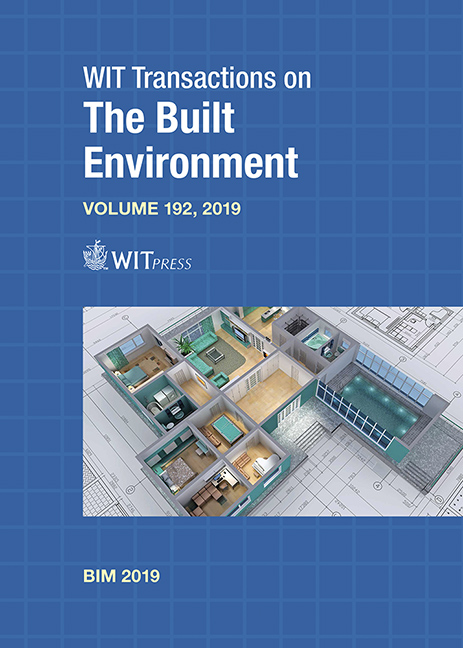USE OF BIM TECHNOLOGY AS A SAFETY TOOL IN THE RESTORATION PHASE OF BUILDINGS: CASE STUDY OF THE FAÇADE OF THE “ROYAL TOBACCO FACTORY” IN SEVILLE, SPAIN
Price
Free (open access)
Transaction
Volume
192
Pages
13
Page Range
291 - 303
Published
2019
Paper DOI
10.2495/BIM190251
Copyright
WIT Press
Author(s)
COSTANZA CIONI, MICHELE DI SIVO, DANIELA LADIANA
Abstract
BIM technologies, which are rapidly spreading in the construction sector, are able to support all the phases of implementation of the construction process – from conception to demolition – regulating the entire life cycle of the building; however, the use of these, in most cases, is limited to the design phase only. The case described – studied in a degree thesis developed within the framework of the international cooperation agreement for research between the Faculties of Engineering and Architecture of the Universities of Pisa and Seville – explores the use of BIM as a useful technology for programming and managing the safety during the restoration of the façade of an important historic building located in Seville: the “Royal Tobacco Factory”. The building, built between 1728 and 1771, served as a factory for the production of tobacco and cigars from its construction until 1950, when it was used as the seat of the Rectorate and some faculties of the University of Seville. Thanks to the use of Autodesk, Revit and STR vision CPM software, a simulation of all the phases of the work was carried out in order to understand how to reduce the levels of risk. The work process was broken down through the use of the “Work Breakdown Structure”, a conceptual hierarchical structure branched on three levels. This operation has made it possible to obtain a general index of the works that contains the codes used by the software as a basis for the organization of work. On the STR Vision CMP BIM platform, it was possible to perform metric computation directly from the Revit model through the “Quantity Take Off” operation. The measures were thus linked through WBS codes with the estimation calculation and the Gantt diagram. Thanks to this type of approach, a 3D model was obtained that contains information not only on the geometry of the building but also on the spatial and temporal organization of the site and on costs. Further research includes the use of Autodesk Navisworks to run 4D simulations to refine the risk assessment and reveal many real issues in advance.
Keywords
BIM, case study, historical building, restoration phase, risk reduction





